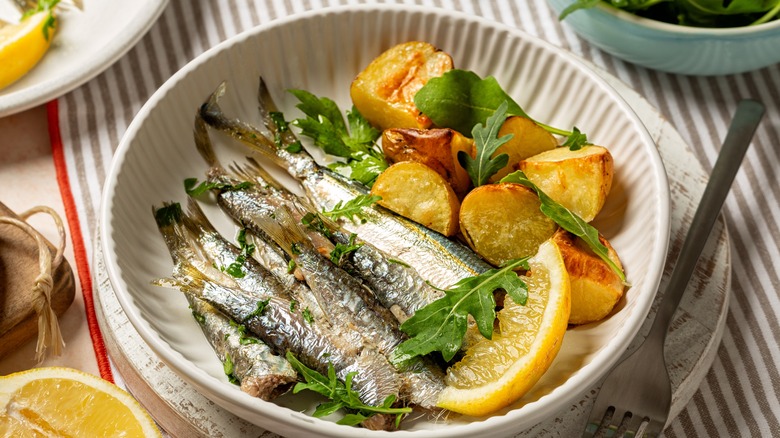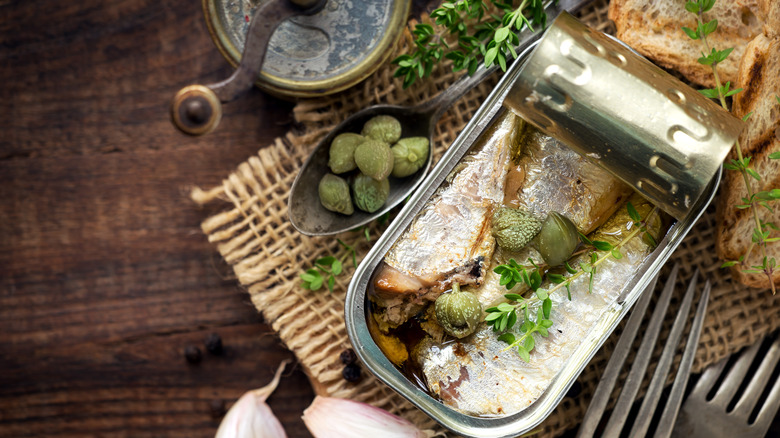What's So Special About Portuguese Sardines?
Once considered "poor man's food," canned sardines are enjoying their moment in the sun. With the recent popularity of "seacuterie" grazing boards, fans of these tasty fish have come up with dozens of ways to elevate a tin of sardines, and Portuguese sardines are amongst the favorites, for good reason.
Delicious, nutritious, and widely abundant in Portugal's vast coastline, they have been a staple in the Portuguese diet for centuries, an important part of their ancient fishing traditions, and therefore, an integral part of their culture. One of their most important traditions is the celebration of Saint Anthony, who apparently had better luck preaching to the sardines than to the people. Since then, the Portuguese celebrate the patron saint of Lisbon every June, eating sardines almost daily.
In Portugal, grilled fresh sardines — accompanied by potatoes, bread, and salad — are the most popular beach picnic snack, but they achieved worldwide popularity thanks to the country's canning tradition, which dates back to the 1850s. Thanks to their high quality, health benefits, and affordable pricing, tinned Portuguese sardines have become a pantry staple around the globe, incorporated into a wide variety of preparations. They are a great source of protein as well as omega-3 fatty acids and vitamin B12, and since they feed on plankton, they have lower levels of mercury than other fish. Canned sardines have 10 times more calcium than fresh ones since canning breaks down the bones, making more calcium available.
How to choose and enjoy Portuguese sardines
While it is possible to find fresh sardines in some markets, canned Portuguese sardines are widely available in different styles. You can find regular-sized sardines, packed whole in water, olive oil, or tomato sauce. They also come in boneless fillets, and can be smoked before packing in oil, or seasoned with garlic, thyme, or chiles. Brisling sardines, known in Portuguese as "petingas," are smaller, firmer little fish which are also delicious. Incorporate sardines into pasta sauces, as a topping for pizza or avocado toast, or just sprinkle some fresh herbs and lemon juice and enjoy them out of the can over crusty bread or crackers.
Unfortunately, the Portuguese sardine population has dropped since the 1990s, mostly due to climate change and excessive fishing. Therefore, when choosing canned sardines (regardless of their origin), it is important to look for brands that use sustainably caught fish. Regardless of the way you want to eat them, choose high quality sardines; the price might be higher too, but the difference in flavor and texture will be worth it. Avoid these common mistakes when using canned sardines and enjoy these umami and nutrient-rich fish in your everyday cooking.

